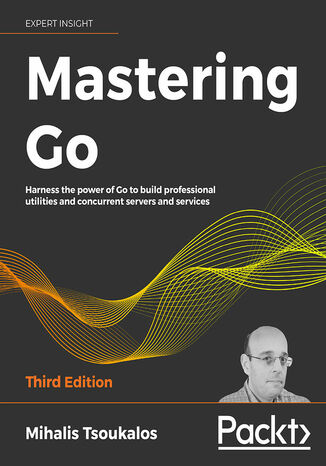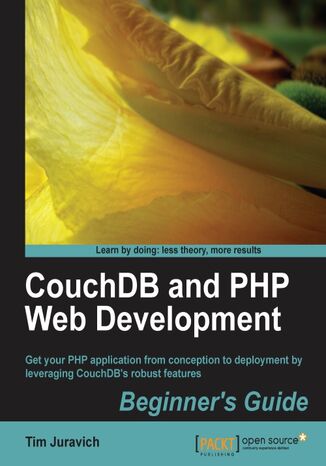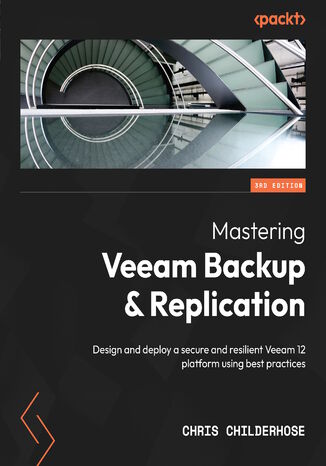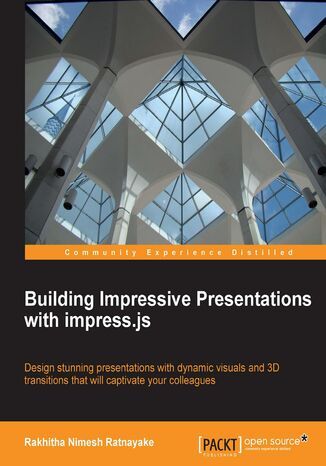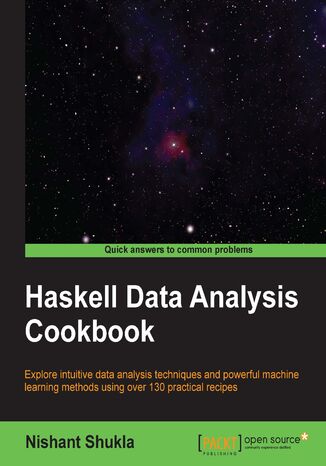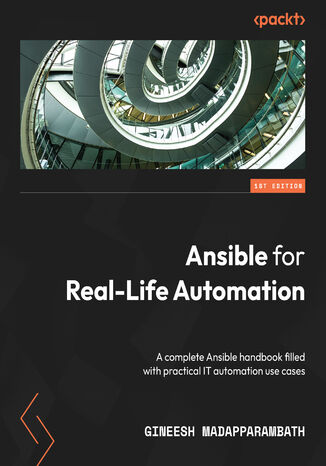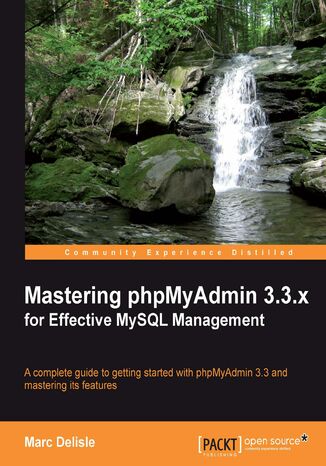Kategorie
Ebooki
-
Biznes i ekonomia
- Bitcoin
- Bizneswoman
- Coaching
- Controlling
- E-biznes
- Ekonomia
- Finanse
- Giełda i inwestycje
- Kompetencje osobiste
- Komputer w biurze
- Komunikacja i negocjacje
- Mała firma
- Marketing
- Motywacja
- Multimedialne szkolenia
- Nieruchomości
- Perswazja i NLP
- Podatki
- Polityka społeczna
- Poradniki
- Prezentacje
- Przywództwo
- Public Relation
- Raporty, analizy
- Sekret
- Social Media
- Sprzedaż
- Start-up
- Twoja kariera
- Zarządzanie
- Zarządzanie projektami
- Zasoby ludzkie (HR)
-
Dla dzieci
-
Dla młodzieży
-
Edukacja
-
Encyklopedie, słowniki
-
E-prasa
- Architektura i wnętrza
- BHP
- Biznes i Ekonomia
- Dom i ogród
- E-Biznes
- Ekonomia i finanse
- Ezoteryka
- Finanse
- Finanse osobiste
- Firma
- Fotografia
- Informatyka
- Kadry i płace
- Kobieca
- Komputery, Excel
- Księgowość
- Kultura i literatura
- Naukowe i akademickie
- Ochrona środowiska
- Opiniotwórcze
- Oświata
- Podatki
- Podróże
- Psychologia
- Religia
- Rolnictwo
- Rynek książki i prasy
- Transport i Spedycja
- Zdrowie i uroda
-
Historia
-
Informatyka
- Aplikacje biurowe
- Bazy danych
- Bioinformatyka
- Biznes IT
- CAD/CAM
- Digital Lifestyle
- DTP
- Elektronika
- Fotografia cyfrowa
- Grafika komputerowa
- Gry
- Hacking
- Hardware
- IT w ekonomii
- Pakiety naukowe
- Podręczniki szkolne
- Podstawy komputera
- Programowanie
- Programowanie mobilne
- Serwery internetowe
- Sieci komputerowe
- Start-up
- Systemy operacyjne
- Sztuczna inteligencja
- Technologia dla dzieci
- Webmasterstwo
-
Inne
-
Języki obce
-
Kultura i sztuka
-
Lektury szkolne
-
Literatura
- Antologie
- Ballada
- Biografie i autobiografie
- Dla dorosłych
- Dramat
- Dzienniki, pamiętniki, listy
- Epos, epopeja
- Esej
- Fantastyka i science-fiction
- Felietony
- Fikcja
- Humor, satyra
- Inne
- Klasyczna
- Kryminał
- Literatura faktu
- Literatura piękna
- Mity i legendy
- Nobliści
- Nowele
- Obyczajowa
- Okultyzm i magia
- Opowiadania
- Pamiętniki
- Podróże
- Poemat
- Poezja
- Polityka
- Popularnonaukowa
- Powieść
- Powieść historyczna
- Proza
- Przygodowa
- Publicystyka
- Reportaż
- Romans i literatura obyczajowa
- Sensacja
- Thriller, Horror
- Wywiady i wspomnienia
-
Nauki przyrodnicze
-
Nauki społeczne
-
Podręczniki szkolne
-
Popularnonaukowe i akademickie
- Archeologia
- Bibliotekoznawstwo
- Filmoznawstwo
- Filologia
- Filologia polska
- Filozofia
- Finanse i bankowość
- Geografia
- Gospodarka
- Handel. Gospodarka światowa
- Historia i archeologia
- Historia sztuki i architektury
- Kulturoznawstwo
- Lingwistyka
- Literaturoznawstwo
- Logistyka
- Matematyka
- Medycyna
- Nauki humanistyczne
- Pedagogika
- Pomoce naukowe
- Popularnonaukowa
- Pozostałe
- Psychologia
- Socjologia
- Teatrologia
- Teologia
- Teorie i nauki ekonomiczne
- Transport i spedycja
- Wychowanie fizyczne
- Zarządzanie i marketing
-
Poradniki
-
Poradniki do gier
-
Poradniki zawodowe i specjalistyczne
-
Prawo
- BHP
- Historia
- Kodeks drogowy. Prawo jazdy
- Nauki prawne
- Ochrona zdrowia
- Ogólne, kompendium wiedzy
- Podręczniki akademickie
- Pozostałe
- Prawo budowlane i lokalowe
- Prawo cywilne
- Prawo finansowe
- Prawo gospodarcze
- Prawo gospodarcze i handlowe
- Prawo karne
- Prawo karne. Przestępstwa karne. Kryminologia
- Prawo międzynarodowe
- Prawo międzynarodowe i zagraniczne
- Prawo ochrony zdrowia
- Prawo oświatowe
- Prawo podatkowe
- Prawo pracy i ubezpieczeń społecznych
- Prawo publiczne, konstytucyjne i administracyjne
- Prawo rodzinne i opiekuńcze
- Prawo rolne
- Prawo socjalne, prawo pracy
- Prawo Unii Europejskiej
- Przemysł
- Rolne i ochrona środowiska
- Słowniki i encyklopedie
- Zamówienia publiczne
- Zarządzanie
-
Przewodniki i podróże
- Afryka
- Albumy
- Ameryka Południowa
- Ameryka Środkowa i Północna
- Australia, Nowa Zelandia, Oceania
- Austria
- Azja
- Bałkany
- Bliski Wschód
- Bułgaria
- Chiny
- Chorwacja
- Czechy
- Dania
- Egipt
- Estonia
- Europa
- Francja
- Góry
- Grecja
- Hiszpania
- Holandia
- Islandia
- Litwa
- Łotwa
- Mapy, Plany miast, Atlasy
- Miniprzewodniki
- Niemcy
- Norwegia
- Podróże aktywne
- Polska
- Portugalia
- Pozostałe
- Przewodniki po hotelach i restauracjach
- Rosja
- Rumunia
- Słowacja
- Słowenia
- Szwajcaria
- Szwecja
- Świat
- Turcja
- Ukraina
- Węgry
- Wielka Brytania
- Włochy
-
Psychologia
- Filozofie życiowe
- Kompetencje psychospołeczne
- Komunikacja międzyludzka
- Mindfulness
- Ogólne
- Perswazja i NLP
- Psychologia akademicka
- Psychologia duszy i umysłu
- Psychologia pracy
- Relacje i związki
- Rodzicielstwo i psychologia dziecka
- Rozwiązywanie problemów
- Rozwój intelektualny
- Sekret
- Seksualność
- Uwodzenie
- Wygląd i wizerunek
- Życiowe filozofie
-
Religia
-
Sport, fitness, diety
-
Technika i mechanika
Audiobooki
-
Biznes i ekonomia
- Bitcoin
- Bizneswoman
- Coaching
- Controlling
- E-biznes
- Ekonomia
- Finanse
- Giełda i inwestycje
- Kompetencje osobiste
- Komunikacja i negocjacje
- Mała firma
- Marketing
- Motywacja
- Nieruchomości
- Perswazja i NLP
- Podatki
- Polityka społeczna
- Poradniki
- Prezentacje
- Przywództwo
- Public Relation
- Sekret
- Social Media
- Sprzedaż
- Start-up
- Twoja kariera
- Zarządzanie
- Zarządzanie projektami
- Zasoby ludzkie (HR)
-
Dla dzieci
-
Dla młodzieży
-
Edukacja
-
Encyklopedie, słowniki
-
E-prasa
-
Historia
-
Informatyka
-
Inne
-
Języki obce
-
Kultura i sztuka
-
Lektury szkolne
-
Literatura
- Antologie
- Ballada
- Biografie i autobiografie
- Dla dorosłych
- Dramat
- Dzienniki, pamiętniki, listy
- Epos, epopeja
- Esej
- Fantastyka i science-fiction
- Felietony
- Fikcja
- Humor, satyra
- Inne
- Klasyczna
- Kryminał
- Literatura faktu
- Literatura piękna
- Mity i legendy
- Nobliści
- Nowele
- Obyczajowa
- Okultyzm i magia
- Opowiadania
- Pamiętniki
- Podróże
- Poezja
- Polityka
- Popularnonaukowa
- Powieść
- Powieść historyczna
- Proza
- Przygodowa
- Publicystyka
- Reportaż
- Romans i literatura obyczajowa
- Sensacja
- Thriller, Horror
- Wywiady i wspomnienia
-
Nauki przyrodnicze
-
Nauki społeczne
-
Popularnonaukowe i akademickie
-
Poradniki
-
Poradniki zawodowe i specjalistyczne
-
Prawo
-
Przewodniki i podróże
-
Psychologia
- Filozofie życiowe
- Komunikacja międzyludzka
- Mindfulness
- Ogólne
- Perswazja i NLP
- Psychologia akademicka
- Psychologia duszy i umysłu
- Psychologia pracy
- Relacje i związki
- Rodzicielstwo i psychologia dziecka
- Rozwiązywanie problemów
- Rozwój intelektualny
- Sekret
- Seksualność
- Uwodzenie
- Wygląd i wizerunek
- Życiowe filozofie
-
Religia
-
Sport, fitness, diety
-
Technika i mechanika
Kursy video
-
Bazy danych
-
Big Data
-
Biznes, ekonomia i marketing
-
Cyberbezpieczeństwo
-
Data Science
-
DevOps
-
Dla dzieci
-
Elektronika
-
Grafika/Wideo/CAX
-
Gry
-
Microsoft Office
-
Narzędzia programistyczne
-
Programowanie
-
Rozwój osobisty
-
Sieci komputerowe
-
Systemy operacyjne
-
Testowanie oprogramowania
-
Urządzenia mobilne
-
UX/UI
-
Web development
-
Zarządzanie
Podcasty
Mastering Go is the essential guide to putting Go to work on real production systems. This freshly updated third edition includes topics like creating RESTful servers and clients, understanding Go generics, and developing gRPC servers and clients.Mastering Go was written for programmers who want to explore the capabilities of Go in practice. As you work your way through the chapters, you’ll gain confidence and a deep understanding of advanced Go concepts, including concurrency and the operation of the Go Garbage Collector, using Go with Docker, writing powerful command-line utilities, working with JavaScript Object Notation (JSON) data, and interacting with databases. You’ll also improve your understanding of Go internals to optimize Go code and use data types and data structures in new and unexpected ways.This essential Go programming book will also take you through the nuances and idioms of Go with exercises and resources to fully embed your newly acquired knowledge.With the help of Mastering Go, you’ll become an expert Go programmer by building Go systems and implementing advanced Go techniques in your projects.
Implementing Palo Alto Networks Prisma(R) Access. Learn real-world network protection
Tom Piens Aka 'Reaper', Rutger Truyers
Discover how Palo Alto Networks' Prisma Access, a firewall as a service (FWaaS) platform, securely connects mobile users and branch offices to resources. This guide, written by renowned Palo Alto Networks expert Tom Piens, introduces cloud-delivered security and Prisma Access components. You’ll learn how Prisma Access fits into the security landscape and benefits organizations with remote networks and mobile workforces, and gain essential knowledge and practical skills in setting up secure connections, implementing firewall policies, utilizing threat prevention, and securing cloud applications and data. By the end, you'll be able to successfully implement and manage a secure cloud network using Prisma Access.
CouchDB and PHP Web Development Beginner's Guide
CouchDB is a NoSQL database which is making waves in the development world. It's the tool of choice for many PHP developers so they need to understand the robust features of CouchDB and the tools that are available to them.CouchDB and PHP Web Development Beginner's Guide will teach you the basics and fundamentals of using CouchDB within a project. You will learn how to build an application from beginning to end, learning the difference between the quick wayù to do things, and the right wayù by looking through a variety of code examples and real world scenarios. You will start with a walkthrough of setting up a sound development environment and then learn to create a variety of documents manually and programmatically. You will also learn how to manage their source control with Git and keep track of their progress. With each new concept, such as adding users and posts to your application, the author will take you through code step-by-step and explain how to use CouchDB's robust features. Finally, you will learn how to easily deploy your application and how to use simple replication to scale your application.
Veeam is one of the leading modern data protection solutions, making it a necessary skill for anyone responsible for backing up virtual environments. This new edition of Mastering Veeam Backup & Replication is revised and updated to cover Veeam version 12.This edition covers some new features added to the application, such as VeeaMover, Per Machine Backup chains, and MFA on the console. The book guides you through implementing modern data protection solutions for your cloud and virtual infrastructure with Veeam while helping you master advanced concepts such as Continuous Data Protection (CDP), extended object storage support, VeeaMover, and security settings. You’ll dive deep into other new features as well, such as Direct to Object storage, Object to Tape and learn about CDP from a service provider perspective with Veeam Cloud Connect (VCC).By the end of this Veeam book, you'll be able to successfully implement Veeam Backup & Replication to secure your environment and enable disaster recovery.
Impressjs, Rakhitha Nimesh Ratnayake
Everyone has had to present during their lifetime. We've all spent agonizing hours trying to make those PowerPoint presentations engaging. Well now there is a tool that will make those presentations look like child's play.Impress.js is a powerful library that eases the task of creating presentations with smooth animations without depending on a software tool. You are no longer limited to desktop tools as these presentations run on any supported browser anywhere on the Internet.Building Impressive Presentations with impress.js is a quick guide to creating professional presentations using the best aspects of CSS3. It will also guide you through several practical examples which go beyond the conventional slide-based presentations, covering each aspect of the Impress library.From simple presentations to your own personal website this handy practical guide will ensure you get the most out of Impress.JS as quickly as you can. Starting with a simple slide-based presentation we move quickly on adding in sliders, galleries and portfolios to utilize this amazing tool. 3D transitions, rotations, scaling, and transforms are also covered to give your presentations that something extra. The final step is bringing all this together to create a personal website that is viewable on all impress supported browsers.Building Impressive Presentations with impress.js gives you the chance to stand out from the competition and engage with audiences in a way you never have before.
Get ready to leverage the power of Ansible’s wide applicability to automate and manage IT infrastructure with Ansible for Real-Life Automation. This book will guide you in setting up and managing the free and open source automation tool and remote-managed nodes in the production and dev/staging environments.Starting with its installation and deployment, you’ll learn automation using simple use cases in your workplace. You’ll go beyond just Linux machines to use Ansible to automate Microsoft Windows machines, network devices, and private and public cloud platforms such as VMWare, AWS, and GCP. As you progress through the chapters, you’ll integrate Ansible into your DevOps workflow and deal with application container management and container platforms such as Kubernetes. This Ansible book also contains a detailed introduction to Red Hat Ansible Automation Platform to help you get up to speed with Red Hat AAP and integration with CI/CD and ITSM.What’s more, you’ll implement efficient automation solutions while learning best practices and methods to secure sensitive data using Ansible Vault and alternatives to automate non-supported platforms and operations using raw commands, command modules, and REST API calls.By the end of this book, you’ll be proficient in identifying and developing real-life automation use cases using Ansible.
Marc Delisle, Software Freedom Conservancy Inc
phpMyAdmin is an open source tool written in PHP to handle MySQL administration over the World Wide Web. It can execute SQL statements and manage users and their permissions. However, when it comes to exploiting phpMyAdmin to its full potential, even experienced developers and system administrators are left baffled.Mastering phpMyAdmin 3.3.x for Effective MySQL Management is an easy-to-follow, step-by-step guide that walks you through every facet of this efficient tool. Author Marc Delisle draws on his experience as one of the leading developers and project administrator of phpMyAdmin and uses his unique tutorial approach to take full advantage of its potential. This book is filled with illustrative examples that will help you understand every phpMyAdmin feature in detail.The book helps you get started with installing and configuring phpMyAdmin and looks at its features. You then work on a sample project with two basic tables and perform basic actions such as creating, editing, and deleting data, tables, and databases. You will learn how to create up-to-date backups and import the data that you have exported. You will then explore different search mechanisms and options for querying across multiple tables.The book gradually proceeds to advanced features such as defining inter-table relations and installing the linked-tables infrastructure. Some queries are out of the scope of the interface and this book will show you how to accomplish these tasks with SQL commands.New features of version 3.3.x, such as synchronizing databases on different servers and managing MySQL replication to improve performance and data security, are covered in this book. Towards the end of the book you will learn to document your database, track changes made to the database, and manage user accounts using phpMyAdmin server management features.This book is an upgrade from the previous version that covered phpMyAdmin Version 3.1. Version 3.3.x introduced features such as new import and export modules, tracking changes, synchronizing structure and data between servers, and providing support for replication.

